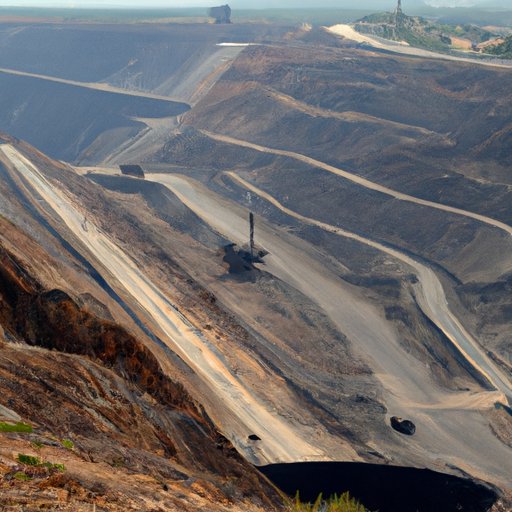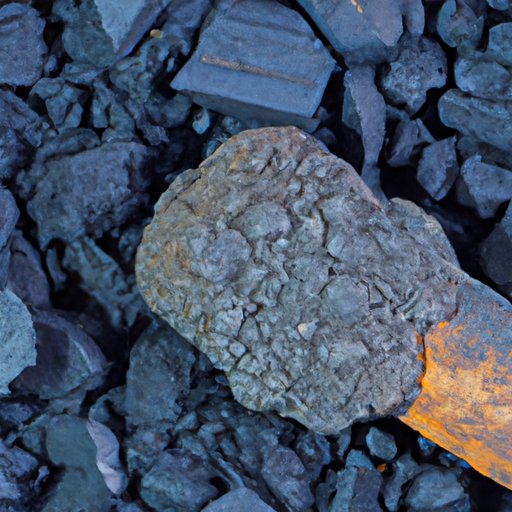What is a Mine?
Mining is the extraction of valuable minerals or other geological materials from the earth. It has been a critical activity for human civilization since prehistoric times. Over the centuries, mining has helped shape economies, cultures, and societies all over the world.
The purpose of this article is to provide an overview of what a mine is, how they operate, their impact on the environment, society, and the economy, and the evolution of mining techniques over time.
An Overview of Mines: From Extraction to Processing
Mining is a complex process that involves the extraction and processing of minerals, metals, and other materials from the earth. The mining process can be divided into four main stages: exploration, development, extraction, and processing.
The various methods of mining used today are open-pit mining, underground mining, mountaintop removal mining, placer mining, and dredging.
The extraction and processing of minerals and metals involve crushing, grinding, and separating the minerals and metals from the ore. Once extracted, they are then purified using chemicals, electricity, or heat before they become usable materials in various industries like construction, oil and gas, and electronics.
The role of technology in mining has revolutionized the industry, making it less labor-intensive and more efficient. With advancements in robotics, sensors, and machine learning, mining can now be done remotely, making it safer for workers.
The Importance and Impact of Mines on Local and Global Economies
Mining is an essential activity for economic development, job creation, and poverty reduction. It generates revenue, creates employment, and provides raw materials for various industries, sustaining economic growth.
Mining has a significant impact on local economies, especially in developing countries where the industry is critical in providing job opportunities and infrastructure development. Conversely, mining can also lead to social and economic disparities in communities where mining is concentrated.
The global impact of mining is significant, with the industry affecting the prices of commodities that are essential to various industries. Mining companies are also responsible for upholding environmental, social, and governance standards, ensuring fair labor practices, and protecting human rights.
The History and Evolution of Mines: A Look Back in Time
The history of mining dates back to the prehistoric era, where humans used stone tools to extract minerals and metals from the earth. Over centuries, mining has advanced dramatically, leading to the development of modern techniques and technologies used today.
Mining techniques have evolved over time, from ancient civilizations using simple tools to the Industrial Revolution’s mechanization of the industry. The 20th century brought further advancements in technology, leading to automated machinery and computer-controlled systems.
The cultural and societal impact of mining throughout history has been significant. From the discovery of gold during the California Gold Rush in 1848, which attracted thousands of people to the area, to the mining of copper in Chile, which has helped shape the country’s economy and culture.
The Environmental Impacts of Mines and Sustainable Solutions
Mining can have a significant impact on the environment, particularly on water, air, and soil quality. The impact can be devastating if not well managed, leading to destruction of biodiversity, soil erosion, and contamination of air and water sources.
Sustainable development is vital in reducing mining’s environmental impact. It involves minimizing waste, reducing emissions, rehabilitating mined lands, and using renewable energy sources.
The government plays a crucial role in mitigating the environmental impact of mining by enforcing environmental regulations, issuing permits, and monitoring mines for compliance.

From Gemstones to Gold: Exploring Various Types of Mines and Their Products
Mines come in different types, depending on the geological materials being extracted. The types of mines include open-pit mines, underground mines, strip mines, placer mines, and mountaintop removal mines.
The most common minerals and metals mined worldwide include gold, silver, copper, iron ore, nickel, platinum, and diamonds.
The value of minerals and metals varies and is dependent on their scarcity, quality, and demand from industries that require them.
The Dangerous Reality of Mines and Their Inherent Risks to Workers
Mining is one of the most dangerous professions, with workers exposed to hazards such as explosions, cave-ins, chemical spills, and radiation exposure.
To mitigate the risks associated with mining, governments and mining companies must provide safe working conditions, appropriate safety equipment, and adequate training for workers. Laws and regulations are crucial in ensuring workers’ rights and safety in the mining industry.
The Politics of Mines: Who Controls Them and Why It Matters
The ownership and control of mines are critical in determining the environmental and social impacts of mining. Governments, individuals, and corporations own various mines.
Politics can influence mining practices and policies, with industry stakeholders seeking to influence legislation to favor their interests. Transparency in mining practices is crucial to ensure responsible and sustainable mining practices that serve the community’s interests.
Conclusion
Mining has been an essential activity for human civilization for centuries. This article has provided an overview of mining, its economic, social, and environmental impact, and the evolution of mining techniques over time. While mining is crucial for economic development, we must recognize the need for sustainable and responsible mining practices that minimize its impact on the environment and local communities while creating employment opportunities and supporting economic growth.
Readers are encouraged to learn more about mining practices, regulations, and their impacts on society and the environment.
